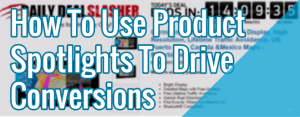
How can a rock supergroup who broke up 45 years ago help you tell the story of your business?
Turns out, they can teach you a lot.
I’m a huge Beatles fan, even though they split up before I was born (which would come as a surprise to my 7-year-old, who recently asked me if I was alive during “Little House in the Prairie” times).
So I was excited when one of my favorite podcasts, The Nerdist, recently interviewed Paul McCartney.
During the interview, McCartney talked about the band’s early days playing clubs in Hamburg, Germany.
Popular lore says that the Beatles achieved overnight fame after their legendary appearance on the Ed Sullivan show in 1964.
Not quite.
Like most bands, they spent years playing in clubs, including a months-long stint performing as the house band in one particular nightclub. (Malcolm Gladwell also talks about this in his excellent book, Outliers).
Before anyone knew who were the Beatles were, they were just another band trying to get people to listen to them.
McCartney set the scene: Early in the evening, before the club was hopping, people would look in the door to decide whether it was worth checking out, or whether they should keep moving to another spot down the street.
Their jobs depended on attracting a crowd to the club, but the shifts were long – eight hours or more – and it was impossible to be “on” all the time when the club was empty. So if the band recognized potential customers as “their kind of people” – young, hip, student types – they immediately got to work tempting them to come in.
It was time to up the energy level, strike up their most popular songs, dance around the stage, even knock heads. All this to tell a story to the onlookers: “We’re your kind of band! This is where you want to be! All the cool people are coming here!”
Over time the Beatles became better and better at building a crowd. They moved on to a more popular club in Hamburg, began to play bigger and better venues when they returned home to England, and eventually they were playing for 60,000 people at Shea Stadium.
What does all this have to do with your website?
Your website is like that club in Hamburg. Your visitors are going to take a quick look around and decide in less than a second whether they’re going to hang around or move on.
You have to know exactly who your audience is and the story you want to tell to make them feel at home right away. New visitors should recognize themselves as a member of your tribe at first glance.
A visitor to your site has started composing a mental story. They are looking for a business that can help them write the ending to that story. Your home page should help them fill in the blanks in their narrative.
They have three questions in mind:
- What does this business do?
- Who do they do it for? (Remember, you’re not the hero, your customer is.)
- Do they look like they know what they’re doing?
Don’t make visitors click to another page to get a preliminary answer to these questions. If they want to learn more, make it easy for them to navigate to another page for details. Your overall design, headlines, copy, and images should convey a general answer to these questions at a glance.
Get it right the first time
You have a very short window to grab someone’s attention when they visit your site. One study showed it takes as little as 50 milliseconds to form an impression of a website! Recent neuroscience research is showing that our brains literally make decisions seconds before we’re even aware of it.
How do you grab your audience’s attention and get them interested in the story you’re telling?
Images: Do the photos and art on your home page look like your customers? If you write books for corporate managers, don’t use a photo of someone dressed for yoga class. Show people wearing suits or business casual. Better yet, show a picture of yourself in a situation your visitors will relate to! Your prospective reader will know they’re in the right place.
Taglines: You don’t have to have a tagline, but if you do it should sum up your key benefit in a few words. Take a look at these examples from graphic designer Marianne Manthey of Design Your Own Lovely Blog and author and speaker Jon Acuff:

“Beautify your blog on a budget.”

“Work can be awesome.”
Glance at these taglines, and you know instantly what kind of stories Marianne and Jon are telling and whether you’re interested in hearing more.
Headlines: Your headlines should be eye-catching and informative to draw the reader into the story. Size, color, font, contrast, and placement help you make them eye-catching. The content makes them informative. Here’s an example from Maynard Webb:

Is there any doubt what this book will do for you?
Copy Blurbs: This isn’t an official marketing term as far as I know. It’s what I call short (1-3 sentences) descriptive text on your home page – kind of like the book summary you’ll find on the back of a paperback.
Here’s an example from Headspace:

“Headspace is meditation made simple. Learn online, when you want, wherever you are, in just 10 minutes a day.”
Perfect. You don’t need long blocks of text on your home page. Your reader’s eyes will slide right by it. Save the other pages on your site for providing more detail.
Testimonials: Remember the three questions every site visitor has? This helps answer question #3, “Do they look like they know what they’re doing?” Quotes or logos from past and present customers introduce new characters to your story and give your site credibility.
Here’s a testimonial on the Sprout Social home page:

A quote from a nationally known brand (Spotify) gives the business credibility.
Home Pages That Work
Here are two examples of pages that do a good job of making themselves instantly recognizable to their target audience.
Rock My Run
Take a look at Rock My Run:

Their tagline explains exactly what they offer – “The Best Running Music in the World.” The image of a fit runner represents the site’s typical customer.
The headline, “Music That Moves You,” and the copy blurb “Save time, perform better, and have more fun with intelligent music and innovative technology that powers your forward” give you a snapshot of what you get when you buy the Rock my Run app.
Rog Law Fitness
Here’s another great example of a home page that instantly makes its ideal customers feel at home:

Rog Law is a personal trainer who offers online fitness and nutrition coaching.
Note the tagline – The Art of Sexification and the opt-in headline “Get Hot Sexification Tips for a Better Body, a Better Mind and a Better Life.”
These fit the mental narrative of someone whose primary motivation for getting fit is looking good for dates or mates, rather than a middle-aged fogey who was just diagnosed with high blood pressure and is thinking about working out for the first time in his life.
The recent blog posts about “Men: Can Fitness Supercharge Your Sex Life?”, “Fat Loss & Muscle Building Supplements” and “How to Use Your Gaming Skills for Fitness Success” will appeal to some website visitors and send other ones running.
Who do you think Rog’s ideal client is – a 40-something mom whose idea of a workout is 3-lb hand weights and a yoga DVD, or a young male professional who wants to build muscle to look good for the ladies? (Please note I’m not saying that Rog wouldn’t work with women, or people over 40 – but there’s a type of prospective client who is the best fit for him, and they will immediately want to learn more when they see this page).
If your website isn’t doing its job, here’s what to do about it.
Take a look at your website as if you’ve never seen it before. What story does it tell?
Better yet, find someone who actually hasn’t seen it before – a friend, business acquaintance, or family member (but ideally someone that fits your Ideal Client profile), and ask them to look at it. The less familiar they are with your business, the better.
Ask them to answer the three questions we covered earlier. Ask them to imagine what type of person this business works with and describe them to you in a few sentences. The answers may surprise you.
Then re-evaluate your tagline, images, headlines, and copy blurbs. What can you change to make your ideal customers feel at home?
Photo Credit: Rodrigo Amorim
(261)
Report Post







